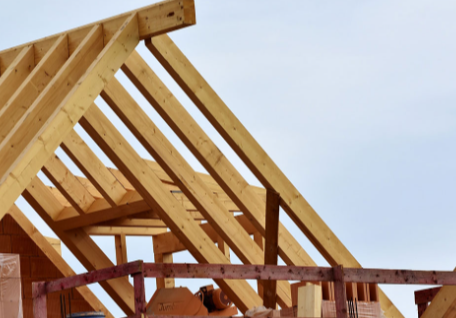Roof trusses made of wood can be traced back to the times of the ancient civilizations, and these are still being incorporated in many construction activities even today. Being strong, very flexible and relatively cheaper to produce wood roof trusses offer several benefits to those who construct the roofs. Read on to find why wood roof trusses still receive a lot of attention in the current construction trends.
1. Cost-Effectiveness
Advantages
- Lower material and manufacturing costs compared to steel or concrete.
- Reduced labor costs due to prefabrication and ease of installation.
Wood trusses also tend to be cheaper than metal trusses by the cost of material used to make them and the cost of production. Moreover, wood trusses are manufactured products that call for minimal fabrication time; thus, upon delivery to the site, erection time is minimal.
2. Strength and Durability
Advantages
- High strength-to-weight ratio.
- Capable of spanning large distances without support.
- Resilient under heavy loads and adverse weather conditions.
Due to their high strength and the capacity to bear loads and stress, wood trusses find applications in a wide range of constructions including the residential and commercial to even industrial society. Wood is noted for its high strength to weight and this makes it possible to design structures with longer span and more openness without extra supporting columns.
Read more Boosting Business Efficiency with Integrated Payroll Solutions
3. Design Flexibility
Advantages:
- Easily customizable to fit unique architectural designs.
- Compatible with various roof styles, including gable, hip, and mansard roofs.
- Can accommodate complex and creative architectural features.
Wood as a material is rather suitable for creating complex and unique truss patterns and several of them may contribute to the interior and exterior design of a building as well as for its construction. Indeed, wooden trusses can be adapted to the characteristics typical of traditional or modern architecture.
4. Eco-Friendly and Sustainable
Advantages:
- Renewable and biodegradable material.
- Lower carbon footprint compared to steel and concrete.
- Can be sourced from sustainably managed forests.
This material is renewable, that is when it is harvested properly it is the best option compared to the other types of construction material. As much as the production of wood trusses may entail the felling of trees which releases carbon dioxide, the making of wood trusses does not release significant amounts of greenhouse gasses as is the case for steel or concrete trusses.
5. Ease of Installation
Advantages:
- Prefabrication ensures precise and consistent quality.
- Lighter weight facilitates easier handling and faster installation.
- Reduced on-site construction time minimizes disruption.
Prefabricated wood trusses are made off-site hence reach high standards due to excellent control of environmental factors. This makes it easier for the construction work at the site because the trusses are already pre-assembled and only need to be erected hence reducing time and possible mistakes on the construction site.
6. Thermal Efficiency
Advantages:
- Natural insulative properties of wood.
- Reduces heat transfer, contributing to energy efficiency.
- Enhances the overall thermal performance of the building.
It is relatively easy to work with and the raw material, that is;wood has inherent abilities that helps regulate room temperature. This thermal efficiency can cut down on the amount of energy used in heating and cooling, thus making wood trusses energy conservation structures for houses and business premises.
7. Sound Dampening
Advantages:
- Wood’s natural ability to absorb and dampen sound.
- Creates a quieter indoor environment.
One of the sound characteristics of wood is its capability in minimizing the transfer of sound and hence improving the sound quality within structures. This makes wood trusses ideal for use in areas that require sound break because of the type of activities being conducted in the building like homes, schools, and offices.
Conclusion
This paper focuses on wood roof trusses in modern constructions and how they are competitive advantages over other options and types of constructions. Practical interest consists in the operational characteristics: The steels are sufficiently strong and rather resistant to deformation at the same time contributing to simple installation of girders.
Even in today’s modernization of construction engineering, wooden truss structures are still a useful and necessary factor that connects the craft of construction with the real masterpieces of modern architectural design.
Wood roof trusses are therefore appropriate for residential applications ranging from constructing new homes where designing a new way of roof framing from scratch, /or reconstructing home where the current framing may need replacement or addition /or even in business where a new structure may need to be out up or existing building may require the framing to be modified.


